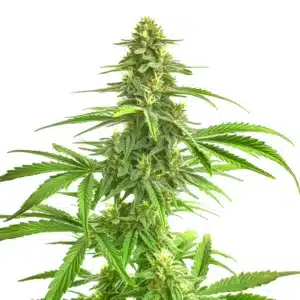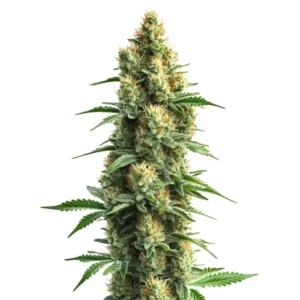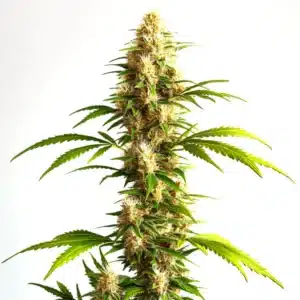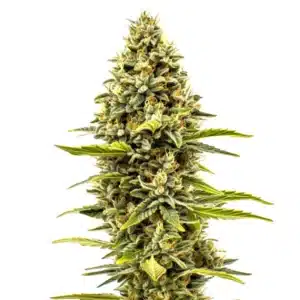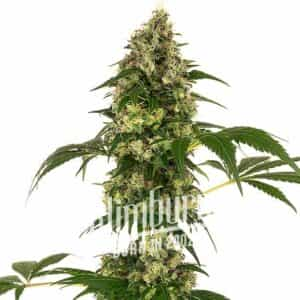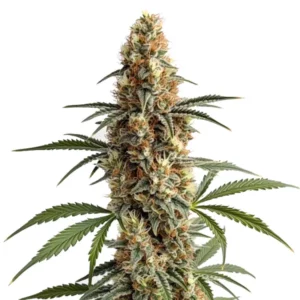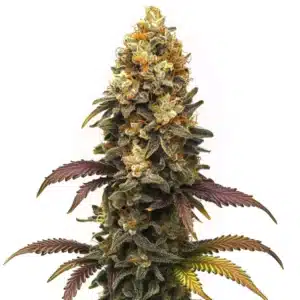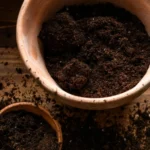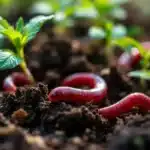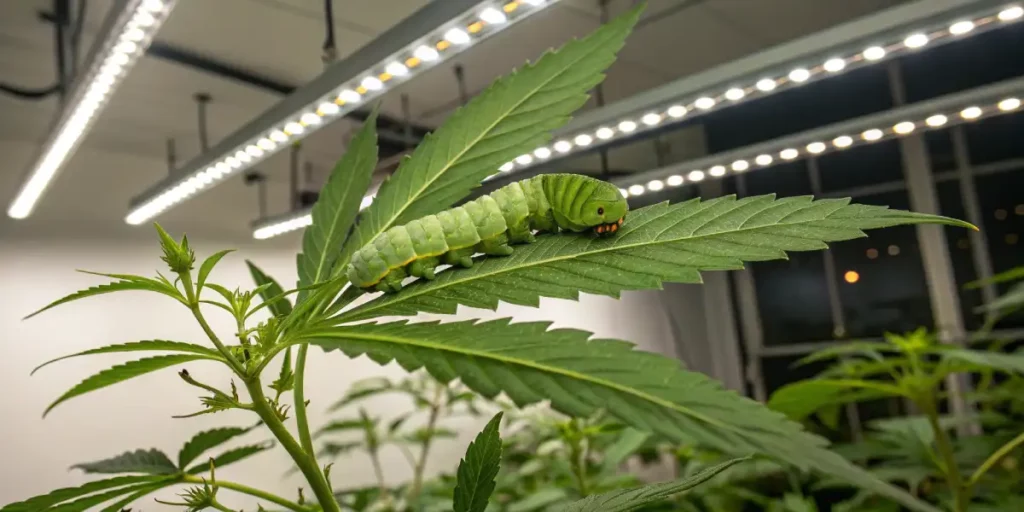
Large Green Hornworm on Cannabis: A Grower’s Challenge
If you’re a cannabis cultivator, you might have encountered the large green hornworm on your plants. These pests can cause severe damage if not addressed immediately. They are the caterpillars of the sphingidae family, known for their sizable green bodies and a horn-like tail. A single hornworm can devour a substantial portion of your plant in a single day.
They are usually more active during the day and can be hard to spot due to their camouflage. Despite their size, these pests can be elusive, making them a formidable challenge.
Recommended Strains
Effects of Large Green Hornworm on Cannabis Plants
Observing your plants closely is crucial for early detection. Besides the visible holes they leave on leaves and flowers, these pests also leave behind dark green or black droppings called frass. This interference with the plant’s photosynthesis can stunt growth and diminish yields.
The effects can also include secondary infections. As hornworms feed, they create wounds on the plant, which can be entry points for harmful pathogens. Furthermore, the damage they inflict on the flowers can result in reduced potency and flavor.
Damage Signs
One of the easiest ways to identify a hornworm is by looking for damage. Always watch that the leaves of your plant are healthy and green. Check them for bite marks or large, irregular holes, making sure to inspect the undersides as well. These pests eat large amounts of foliage and buds in a short time. Don’t forget to inspect the undersides of the leaves regularly, as this is where hornworms often hide during the day. Also look for their droppings (frass) on the leaves or ground.
Promos & Deals
How to Get Rid of Green Hornworm on Cannabis
There are several methods to get rid of hornworms. The simplest way is manual removal. Using gloves, inspect your plants daily and remove any hornworms you find. You can also use natural predators like ladybugs, lacewings, and parasitic wasps to control the population. Organic insecticides that are safe for your plants are also an option. One effective biological agent is Bacillus thuringiensis (Bt), a naturally occurring bacterium that is lethal to hornworms but harmless to humans.
Important: Treatment Timing (Vegetative vs. Flowering)
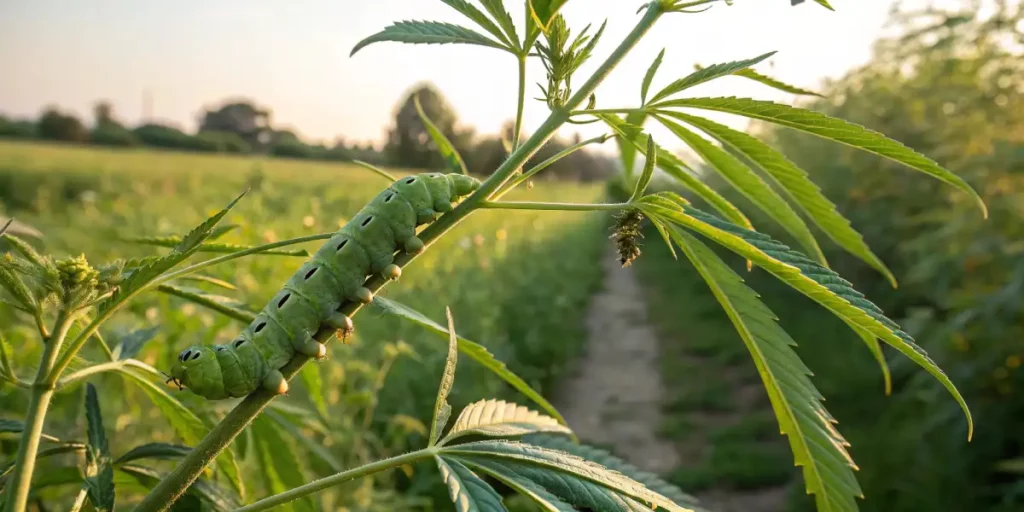
The stage of your plant’s growth determines what treatments are safe to use. During the vegetative stage, if an infestation is severe, you can use more potent or even chemical treatments if required, as the plant has time to recover and the flowers are not yet present. However, the biggest problem is finding hornworms during the flowering stage. At this point, you cannot spray anything toxic on the buds without contaminating your final product, which means you are often limited to removing them by hand, one by one.
Advanced Control
For severe issues with both pests and mold, some growers use sulfur burners. This involves vaporizing sulfur in the grow space, but it is an aggressive technique that must be used with extreme caution and typically only during the vegetative stage or in an empty room between cycles, as it can affect the final taste of the buds.
Preventing Large Green Hornworm on Cannabis
Prevention is always better than cure. Regular inspection is the first step.
- Crop Rotation: Planting different crops can disrupt the life cycle of the hornworms.
- Companion Planting: Grow plants that attract hornworm predators, such as marigolds and dill.
- Increase Airflow: Hornworms and the moths that lay their eggs are bothered by wind. Increasing ventilation in your grow space can make the environment less hospitable for them.
- Use Traps: Placing sticky fly and moth traps among your plants is a simple way to reduce the number of adult moths (the adult form of the hornworm), which prevents them from laying eggs in the first place.
- Create an Unfavorable Environment: Keep the area around your plants clean and free of debris.
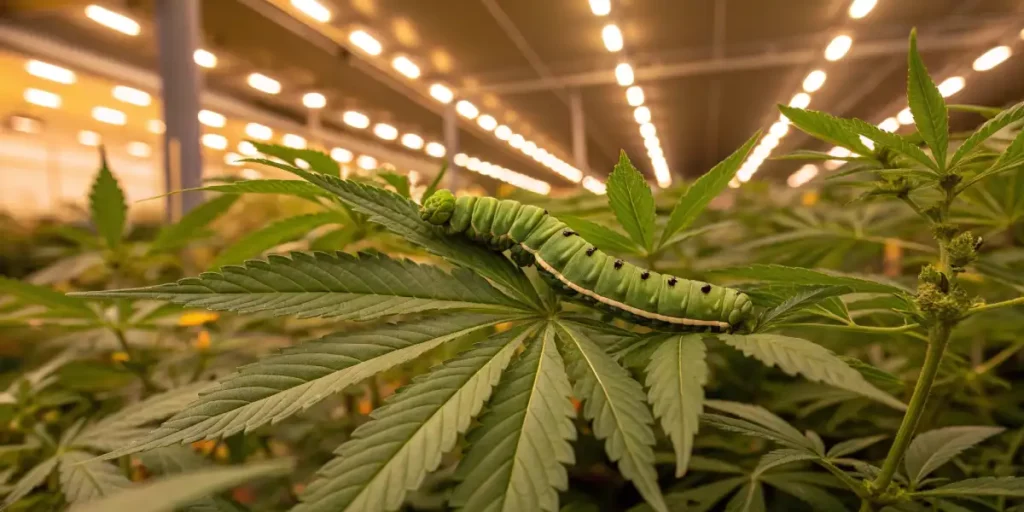
Frequently Asked Questions
How common are hornworms on cannabis plants?
They are fairly common pests, especially in outdoor gardens where the adult moths are abundant. Regular inspection can help prevent a major infestation.
Are there any natural predators of hornworms?
Yes, natural predators include birds, spiders, and beneficial insects like ladybugs, lacewings, and parasitic wasps. Encouraging these in your garden can help.
What other pests should I watch out for?
Besides caterpillars, other common pests include aphids, spider mites, whiteflies, and thrips. Each requires a different approach for control.
Can hornworms infest indoor cannabis plants?
While more common outdoors, they can also infest indoor plants. The adult moths can enter through open windows or doors. Regular inspection is crucial for all grows.


